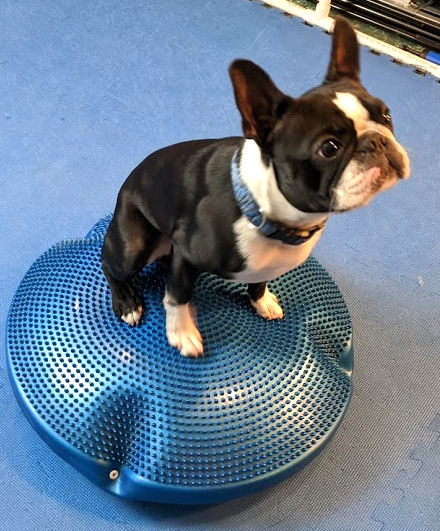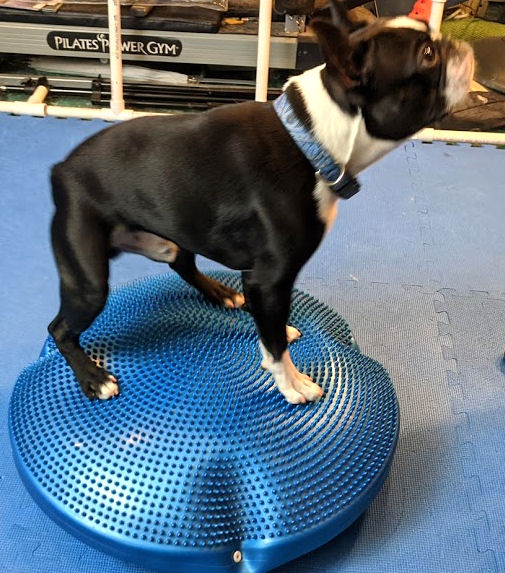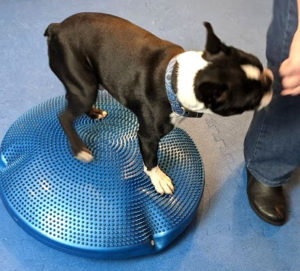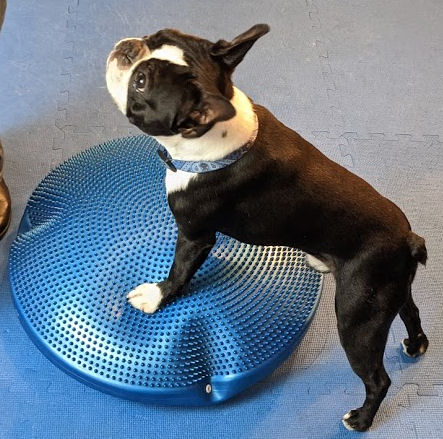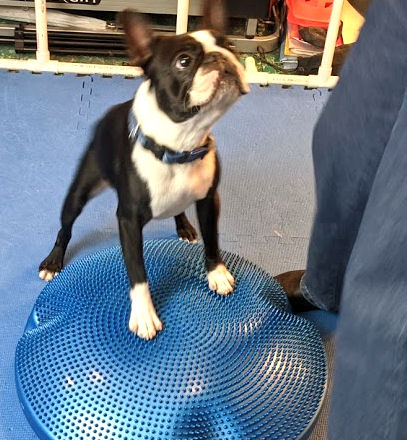If dogs are people’s best friends, it’s up to us to look out for the wellbeing of our dogs. Dogs give us the gift of unconditional love. We owe our companions the best life possible. That includes looking after their physical, as well as mental health.
All aspects of life
Dog training games provide mental stimulation and enrichment. We’ve talked about how the games also enhance our bond and relationship with dogs. But how can we improve our dogs physical wellbeing, too?
One of the easiest ways is incorporate balance and stability exercises into our training games. This is particularly important as our dogs age. Like us, dogs’ strength and balance can wane with the years if these capabilities aren’t exercised.
Exercise isn’t a four-letter word
Many people, us included, don’t particularly enjoy “working out,” or exercising. We do it because we know it’s good for us, and allows us to keep doing the things we love – like eating chocolate. Our dogs have a better attitude about working out. As far as they know – it’s just another game we play together. And our dogs are always up for a game.
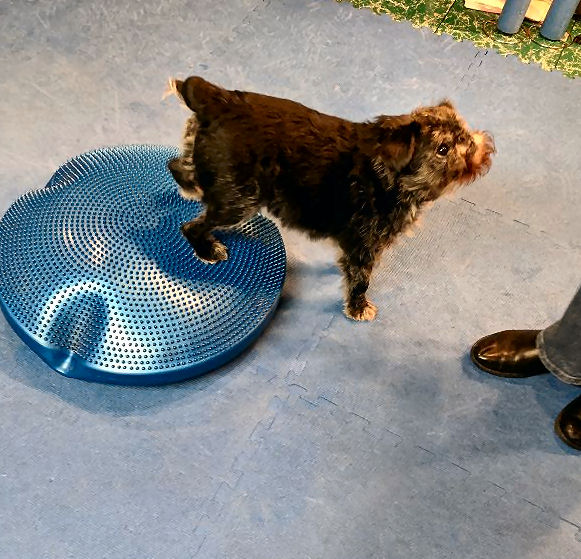
The particular exercise games each dog plays depend on that dog’s wellbeing needs. For example, Fran’s Brussels Griffon Tango is a senior dog at 11 years old. He’s by far the most flexible dog we’ve ever had. We sometimes joke that he has no bones – only cartilage, like a shark. Fortunately, he doesn’t have the dental array of one.
Tango’s issue with wellbeing was that he lacked core strength. He can practically bend in half, but he couldn’t hold himself up for a trick like “sit pretty.” To address this lack, we started doing balance disc exercises with him, shown in the video. He does this routine with Fran almost every day and it’s made a huge difference. If you don’t have a balance disc, you can use any cushion big enough for your dog to stand on. The whole routine takes only a couple of minutes, and makes a major impact on the wellbeing of your dog. (This post has more about your dog’s balance and how you can incorporate these games into your training.)
Different issue
Torque, Hope’s French Bulldog, has different fitness needs. He’s extremely top-heavy, like all Frenchies. He tends to use his front half for everything he can, so the challenge is keeping his hips and back legs strong. Hope developed a routine for Torque of “squats” and “crouches.” Using a four-inch step, Torque steps off the back and crouches, sits on the step, steps off the front and squats. It helps work his whole body, with emphasis on using his knees and hips.
These exercise routines were presented to the dogs as new games, taught in little chunks and evolving over multiple training game sessions. The dogs don’t know they’re “working out,” because they never see sessions as work. Tango even complains when he sees other dogs doing balance disc routines – he’s impatient for his turn.
Wellbeing of dogs games
When you and your dog get in the great habit of 2-Minute dog training games, you’re taking the best care of your best friend. We know that addressing the needs of both mind and body allows everyone, including our dog, to live the best life.

